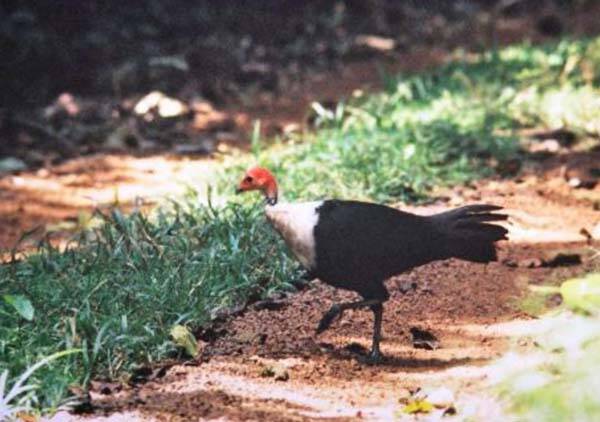Agelastes meleagrides
IUCN
LCBasic Information
Scientific classification
- name:Agelastes meleagrides
- Scientific Name:Agelastes meleagrides,White-breasted Guineafowl
- Outline:Landfowl
- Family:Gallinariformes Gallinariidae Gallinariformis
Vital signs
- length:About 40 cm
- Weight:Around 700g
- lifetime:No textual research information is available
Feature
It's the rarest bird in West Africa
Distribution and Habitat
It is found in western Africa, including Ghana, Cote d 'Ivoire, Liberia and Sierra Leone. The white-breasted black-beaded chicken is also found in the forests of Guinea. They live in the Gora Forest in Sierra Leone and Liberia and in Tye National Park in Cote d 'Ivoire.
It inhabits dense virgin rainforests and prefers dense undergrowth and forests.
Appearance
The white-breasted black-beaded chicken is a striking medium-sized land bird and is the rarest bird in West Africa. Its appearance is very characteristic, with a completely bald red head and upper neck, a white chest and neck, and a black body marked with very fine white lines. The tail is long. The long legs are grayish-brown or grayish-black, and the beak is greenish-brown. Males and females are similar in appearance, but males are slightly larger and have one or two burrs on their legs.
The plumage of the young bird is darker than that of the adult bird, and the black spots spread to its neck and chest. Its head is dark, too. Young birds of this species do not have white on the chest or neck, but have a white belly. The black patches on the neck decrease with age, but some adult birds still have small black marks on the side of the head.
Details
The White-breasted Guineafowl, known as the Agelastes meleagrides or White-breasted Guineafowl, usually lives in small groups of about 15 to 20 birds that search for food together on the rainforest floor. If disturbed, group members usually get together, call out, and disperse into the forest if the threat persists. It consists mainly of small invertebrates and is eaten very quickly. They also eat termites, ants, crickets, millipedes and beetle larvae, and may also feed on berries and fallen seeds.

Listed on the International Union for Conservation of Nature (IUCN) 2016 Red List of Threatened Species ver 3.1 - Vulnerable (VU).
Protect wild animals and eliminate wild meat.
Maintaining ecological balance is everyone's responsibility!








